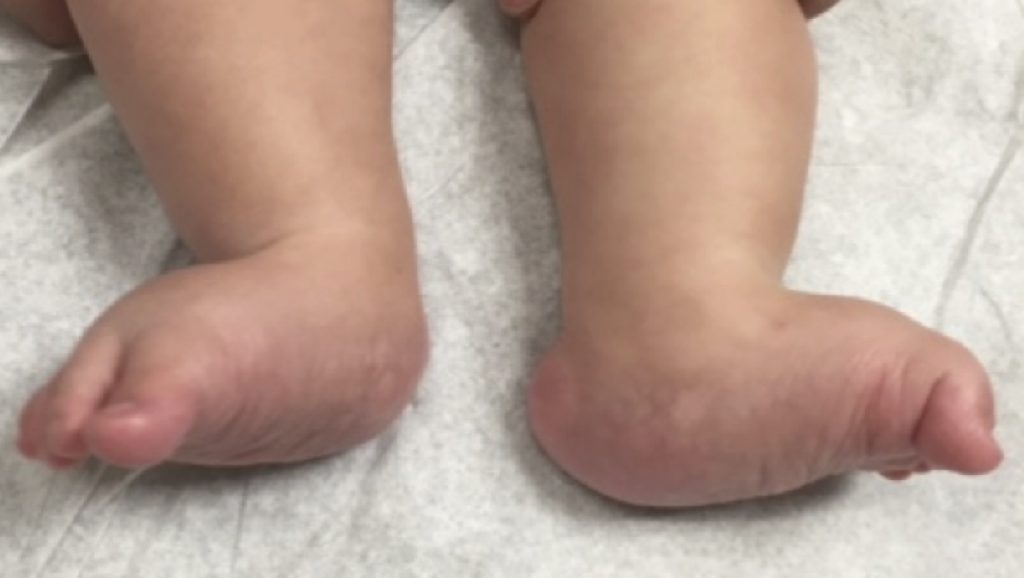Treatment of rocker-bottom foot condition in newborns and children

All about Legg-Calve-Perthes disease, a rare hip condition in growing children
December 16, 2021
What to do if your baby is found to have Clubfoot when you are pregnant?
January 25, 2022Congenital vertical talus is a rare congenital foot deformity in which the sole of a child’s foot flexes abnormally in a convex position giving the foot a rocker-bottom appearance. For this reason, this condition is often called rocker-bottom foot
It is a rigid deformity, unlike the calcaneovalgus foot, which is known as flexible deformity. Attempts at treating it through bracing or stretching are not quite successful, so surgery is the best option to resolve the congenital vertical talus condition.
Dr. Ratnav Ratan has treated many children with congenital vertical talus conditions. He further explains congenital vertical talus conditions in children.
Condition of the foot of a newborn child
The foot of a newborn is flat as it has a lot of fat pads at the bottom. With growth, the foot develops a concave arch normally. In the case of a child with congenital vertical talus, the toes and the heel of the foot flex in the opposite direction while its middle touches the ground. Therefore, on examining the foot in detail, the toes and the heel will be touching the shin.
Usually, both the feet are affected, and it affects both boys and girls. It is likely to occur in 1 in 10,000 births.
The musculoskeletal or neurological conditions are likely causes of Congenital vertical talus –
- Arthrogryposis multiplex congenita
- Spina bifida
- Trisomy 13, 14, 15 or 18
In some cases, the exact reason is unknown, especially in the case of healthy children.

Signs and symptoms associated with congenital vertical talus
- The physical appearance of the foot at birth or when the child begins to walk
- Abnormal positioning of the foot
- Abnormal walking pattern – The child exerts pressure on the inside of the foot while the outside edge is raised. As a result, the gait leads to improper weight distribution and balance.
- Upward flex of the fore and the midfoot
- Elevation in the hindfoot on account of abnormal flex in the ankle
- Improper alignment of the midfoot
Testing and diagnosis of the congenital vertical talus
It is necessary to conduct a thorough physical and medical examination of the child to detect abnormalities. In addition, the child is checked for multiple joint contractures or signs of any multisystem genetic disorder along with the foot. The examination includes examining the child in standing and when mobile to ascertain the exact condition of deformity in the child.
Imaging tests recommended are
- X-rays help to view the talus bone and its positioning.
- EOS imaging for 3-dimensional models from two flat images when the child is in weight bearing position
- Computed tomography (CT) scan that helps in examination of the bones through ‘sliced’ images of the body
- Magnetic resonance imaging (MRI) helps with detailed images of the entire body, including organs, soft tissues, muscles, ligaments, and so on.
If required, the child is referred to for a complete neurological exam if a neurological condition is detected.
Treatment of congenital vertical talus
It is of utmost essential that a child with this condition receives immediate treatment. The treatment could be either surgical or nonsurgical, depending upon the extent of congenital vertical talus.
Nonsurgical treatment
Doctors may recommend a variety of nonsurgical treatments are recommended to prevent the condition from worsening and prevent surgical procedures. These include:
- Stretching exercises for the forefoot and hindfoot
- Serial manipulation and casting of the midfoot and forefoot in a flexed position to reduce the upward curve of the foot
The condition of the congenital vertical talus is likely to improve but often for a short period.
Surgery
Surgery for congenital vertical talus offers promising results considering its focus on correcting foot movement. The correction surgery is recommended when the child is 9 to 12 months.
If the initial nonsurgical treatment does not sufficiently correct the problem, the doctor may recommend surgery as early as 9 to 12 months of age.
The various types of surgeries feasible to resolve this condition are –
- Bone work in older children
- Minimally invasive tendon procedures
- Extensive soft-tissue release surgery
(both these surgeries promise early recovery and small scars)
- Correction of foot movement –
- side-to-side
- up-and-down
- front-and-back
Outcomes of Surgery
Surgical correction of congenital vertical talus has good results, especially a stable and well-functioning foot that allows the child to wear normal footwear and play.
The doctor could recommend an orthotic to ensure proper foot alignment till the development stage.
Lifelong follow-up care is essential in the case of congenital vertical talus on account of musculoskeletal syndrome or neurological condition.
Gurgaon-based orthopedic surgeon Dr. Ratnav Ratan states that if left untreated, the child could develop disability, pain, and trauma associated with congenital vertical talus condition
Dr. Ratnav Ratan is one of the best pediatric orthopedic surgeon in Delhi available for treating the congenital vertical talus condition. He is available at youngbonesclinic@gmail.com and +91-82795 51675 for consultation and appointment



